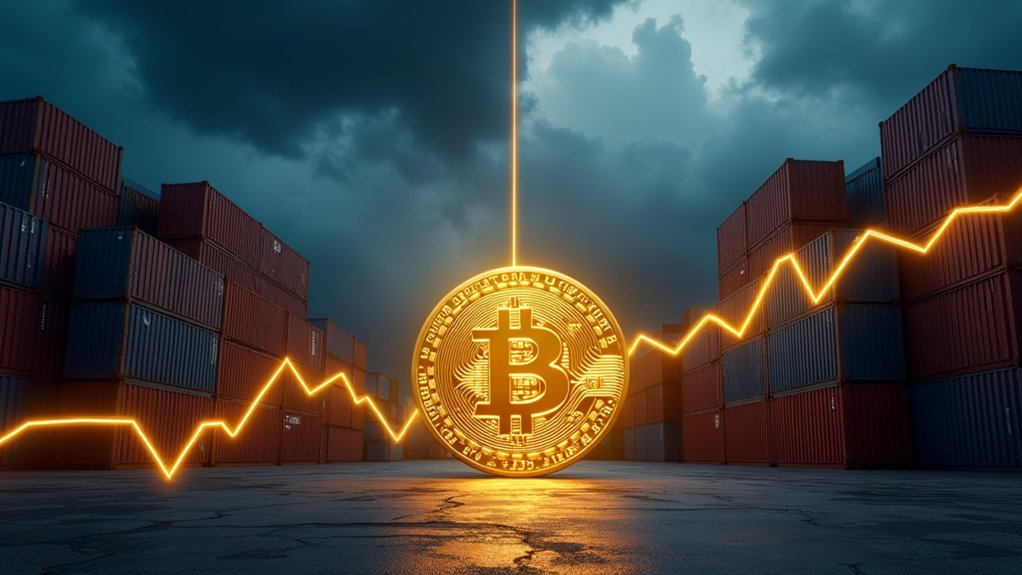Uncertainty hangs heavy over crypto markets these days. Bitcoin’s price has been on a rollercoaster, tumbling from $110,000 to $84,327 in recent months. Trump’s new tariffs aren’t helping. They’ve added another layer of chaos to an already volatile situation.
But here’s the thing—this downturn might not last forever. Some analysts are betting big on Bitcoin’s recovery. They’re throwing around numbers like $150,000. Seems crazy, right? Maybe not. As tariffs push inflation higher and central banks respond with interest rate hikes, traditional markets get squeezed. Bitcoin, with its hard cap of 21 million coins, starts looking pretty attractive by comparison.
While today’s crypto winter chills investors, Bitcoin’s fixed supply looks increasingly appealing as tariffs drive inflation and rate hikes squeeze traditional markets.
Gold is still king of safe havens. It’s up 18% this year while Bitcoin flounders. Old habits die hard. But when tariff impacts stabilize, crypto could get a second look from serious investors seeking shelter from economic storms. The blockchain technology underpinning Bitcoin creates permanent, transparent records of all transactions, building trust among potential investors during uncertain times.
Let’s face it: tariffs make stuff more expensive. Companies pass costs to consumers. Inflation rises. Central banks panic and hike rates. The whole system shudders. Bitcoin was literally designed for moments like this—when trust in governments and their currencies starts to crack.
The correlation between crypto and traditional markets is getting stronger. When stocks sneeze, Bitcoin catches pneumonia. We’ve seen this play out as tariff fears tank investments across the board. Bitcoin isn’t the independent rebel it once was. Trump’s proposed universal tariff of 20% could potentially lead to stagflation, further intensifying market instability.
Yet protectionist policies might accidentally boost Bitcoin’s appeal. When governments start trade wars, people look for alternatives to fiat currencies. Bitcoin’s “anti-system” narrative suddenly sounds less like crypto-bro hype and more like practical thinking.
Will tariffs supercharge Bitcoin? Maybe. The same policies driving down prices today could fuel tomorrow’s surge. Markets are funny like that. They panic, then adapt. Bitcoin’s design as inflation-resistant and decentralized fits perfectly into a world fragmenting under trade tensions.
Sometimes you have to crash before you can soar. The recent liquidity withdrawals from active trading addresses since late November suggest institutional investors might be preparing for significant market moves.





